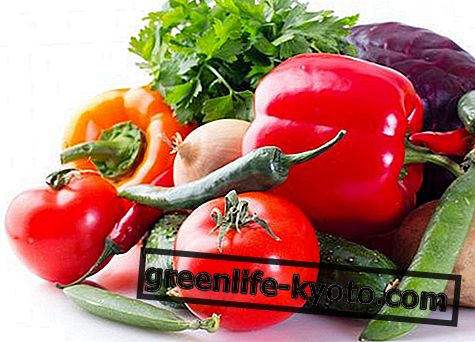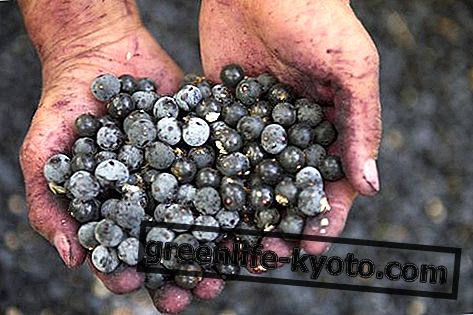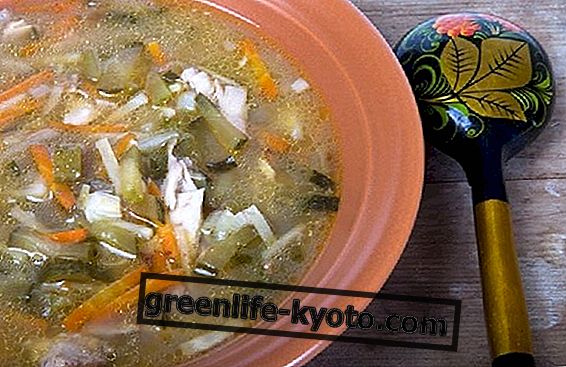
Mushrooms, by many mistakenly considered as vegetables, belong to a realm of their own, that of protists. Unlike plants, they do not have roots or stems or leaves and are devoid of chlorophyll (a green substance that allows plants to "feed themselves", through the process known as photosynthesis).
The nutritional value of mushrooms is comparable to that of vegetables, due to the abundant quantity of water present (80 - 90%), even if they contain a more relevant protein fraction (3 - 5%).
Discrete is the content of vitamins B1 and B2 ; that of vitamin C is scarce. The minerals present (0.5 - 1.5%) are potassium, phosphorus, copper, iron and calcium. Sugars are less than 3 - 5% and lipids are almost absent. Cellulose and chitin (<3%), non-digestible dietary fiber are also present. Among the minor compounds there may be urea (consisting of nitrogen), pigments (responsible for the color of certain fungi), antibiotic substances, toxins and alkaloids, with poisonous or hallucinogenic properties.
Among the 100 or so known species of edible mushrooms, in Italy the most well-known are the porcini mushrooms : easily recognizable by the brown chap without lamellas and the cream-colored stem, they grow from May to November. It is a fleshy mushroom, with a firm and white pulp, the smell is insignificant but the taste is excellent.
The morels have a characteristic spongy cap of conical shape, sometimes roundish, and cylindrical or swollen stem, smooth or wrinkled, but always hollow and white in color; found from March to June.
The russolas, with their smooth and globular hats, with slimy voils, and with a hollow and white stem with whitish lamellae, are characterized by a remarkable chromatic variability: from red to brown, up to cream white, however always in bright colors; their season runs from May to September.
The chanterelles are roughly the shape of a funnel, with a smooth, shiny hat and a beautiful yellow / orange color; the lower surface of the cap, of a bright yellow color, is covered by running folds over the entire length of the stem which is short, yellow, full and fibrous. The smell is very pleasant and the flavor is accentuated; they can be harvested from June to November.
Some species of mushrooms are suitable for cultivation in special air-conditioned greenhouses, in which the spores of the mushrooms are "sown" in cultivation beds filled with sterile soil and covered with peat, lime and water.
The cultivated mushrooms are available all year round and the most widespread species in Italy are the prataiolo, or champignon, and the pioppino or piopparello, with a cream colored cap and beige or tobacco stripes .
Mushrooms are an excellent opportunity in a low-calorie diet, as they give a remarkable flavor to preparations with very few calories.
How to choose mushrooms
- Fresh and clean mushrooms, whole and with the cap attached to the stem, firm, of uniform color and without spots, of pleasant and delicate odor.
- The label of packaged mushrooms must mention the place of origin, that of dried mushrooms must bear the expiry date.
- The porcini must have the firm stem and the lower surface of the yellow or green cap, never dark; size is not a quality criterion.
- Avoid floppy, wrinkled or dark mushrooms with dented lamellae or the hat separated from the stem.
Mushrooms in the kitchen
Before using them in any preparation, wild or cultivated mushrooms must always be carefully cleaned : cut the hard and earthy part at the base of the stem, brush them with a soft brush specific for the mushrooms and finally rub them gently with a damp sponge. The dried mushrooms must be soaked in warm water for 20 minutes, then squeezed .
All cultivated mushrooms can be eaten raw or stewed and are used in many preparations . Excellent sautéed in risotto, fried in batter or stews, they can also be eaten raw in salads. Mushrooms in oil or vinegar lend themselves to being tasty appetizers. Wild mushrooms are kept in the fridge for 1-2 days at the most; the cultivated ones resist even 4-5 days .
Good to know
It is important to pay close attention to the collection of wild mushrooms: if you are not an expert, it is better to buy them in the store. It is necessary to dispel the classic clichés which assert that silver immersed in the cooking water of poisonous mushrooms blackens; poisonous mushrooms do not always have an unpleasant smell or taste ; not all mushrooms that change color when cut are poisonous and vice versa (for example, the foul-mouthed amanita, very poisonous, does not change color), boil or wash mushrooms with water and vinegar does not eliminate the toxicity of poisonous ones at all .
Read also Autumn mushrooms, how to recognize them >>













